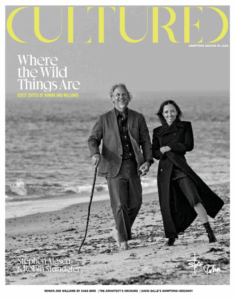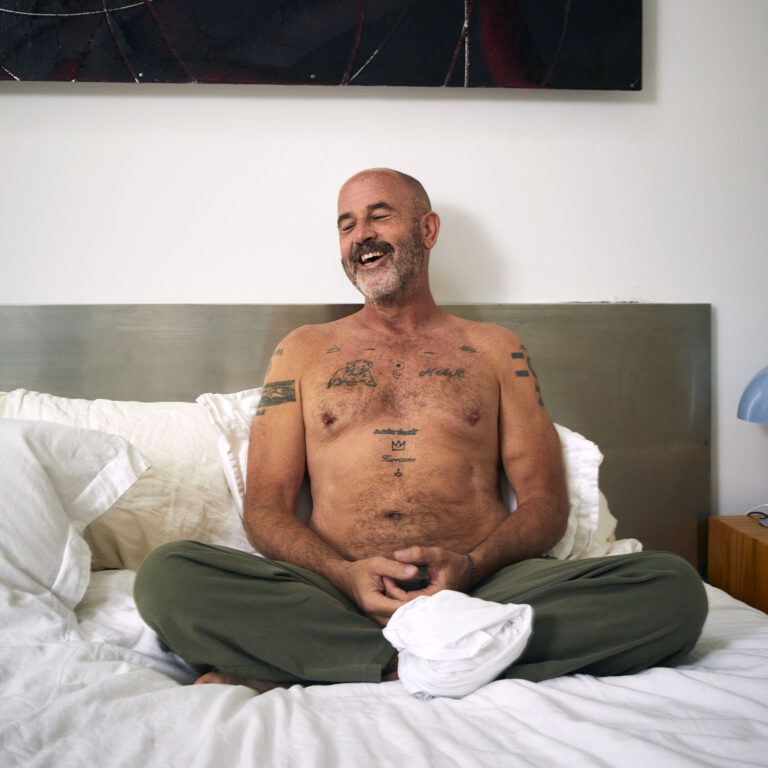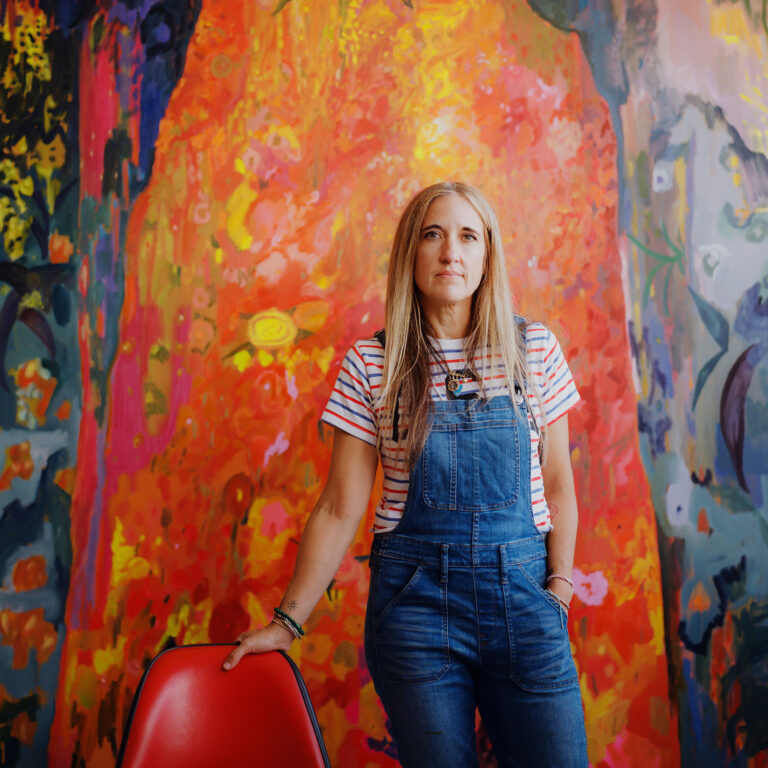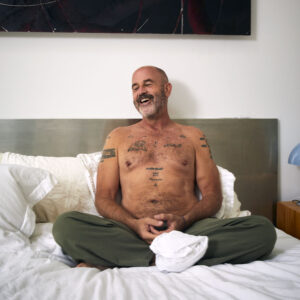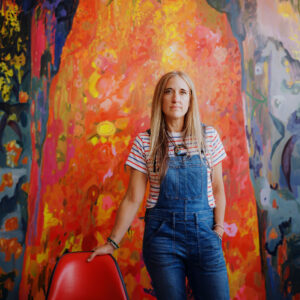
I visited Math Bass Echo Park studio in the last days of 2020 as they were finishing a new body of work for their solo show, “Desert Veins,” opening a few weeks later at Vielmetter Los Angeles. Over the past six months, I had been receiving texts from Math with images of their paintings in stages, beginning with the faintest underpainting and then building up over weeks with layers of richly colored oil. These paintings becoming paintings arrived to my phone like precious gifts that I viewed over and over again. One week brought the severed head of Anubis and a white gloved hand reaching towards it (what Math calls “anthropological imaging”), the next a snake body wrapped around a pile of eggs. A few weeks of silence followed, and then, as the isolated winter set in, dozens and dozens of paintings of a field of graves began appearing, almost like prayers.

Isabelle Albuquerque: I look at the grave paintings pretty much every day and felt very connected to them before I even knew that the central stone was Thomas Merton’s. What first drew you to him?
Math Bass: I was interested in his life and his journey towards asceticism. He was a Trappist monk and devoutly spiritual. He was also adamantly anti-war and radical in his politics, and when he was found dead in his hotel room in Bangkok, the circumstances behind his death were very suspicious. It’s rumored that he might have been assassinated by the CIA. I started doing image research and I came across a series of images of his grave in Kentucky. In all of the images, it’s his stone with identical stones surrounding it—but his stone is always adorned with flowers or rosaries or, in this case, a satin sash.
IA: It’s like the cross becomes a stone body and the sash feels almost like a scarf draped around its neck. Why do you think you chose this particular image?
MB: We’re inundated with a surplus of images. We have images for all of eternity—there are so many images—but then sometimes I come upon certain images that I do find to be so poignant. I want to bring in an energetic potency that I’m finding myself responding to in an image. It’s almost like I want to resurrect it.
IA: What led you to oil paint as the medium of resurrection for these new works?
MB: It’s a challenging material, it has its own logic and intelligence. I think about all the other work and the years and years of making that work. I always had people working on the gauche paintings with me. I wasn’t doing it all entirely by myself. I had assistants; it was a collective means of producing an image.
When I started working in oil, I also started working alone, and the paintings felt like they were flickering. The first oil painting I made had this quality, this quivering, wavering, almost the quality like a candle flame. I was working with the visual vocabulary I have been developing over the last decade, and I loved how the oil brought a depth and an animus to the language. I worked many years in such a way to remove the hand, and now my hand is returning.

IA: How did the painting of the camel skeleton come about?
MB: The phrase first popped into my head after a meditation… Camel skeleton… And then there was this almost four-month period that elapsed from when I started working on the image and when I actually finished it. What happened in that time was life-altering: change, loss, shifts on top of our restructuring of society, collapse, social-justice uprising, death. Yeah, by the time I got to paint the bones of the last toe, I was just weeping. I just started crying and weeping. I can’t even try to render that time, I can’t even define that time. I just needed to finish this thing.
IA: You said earlier that the skeleton is like a timeline of this year?
MB: A camel can endure. They can go for five to six days without food or water. Their red blood cells are not round, they’re oval. They’re the only mammal with oval-shaped red blood cells. There’s something about the shape of their blood cells that allows them to circulate in blood that has thickened from dehydration and to radically expand during rehydration.
IA: When I look at the painting, I don’t just see the camel’s skeleton, I also see the body that it used to support.
MB: Yes. We live in multiplicity and that is what’s happening all the time.
IA: The snake body is also recurring in these new paintings.

MB: I think it’s a powerful symbol of transformation. I think when I first started working on the snake, I was processing what at the time felt like the possibility of my mother’s death. One of the first snake images that I made was a snake wrapped around her eggs, holding them. I see so much of that as just this response to knowing or understanding that I was going to lose my mom. Then also how this creature that we think of as being so cold actually is emitting so much warmth. I think there is this way that we’re held and protected by our mothers.
IA: This idea of being held seems to really permeate the new work. Also, how much space they hold for the viewer.
MB: It’s much more spacious. I got to this place where I just was so invested in having created this language and exploring the limits of this language, I was ready to open up to the possibility of allowing more in. The snake became like a bridge between the old language and the potential for many different kinds of images.
IA: It reminds me of how when you lose something, you also gain something. How loss and its opposite are always in relationship. There’s been so much collective and personal loss this year, and from the loss you seem to have opened up a whole new way of painting.
MB: I started meditating this year in a serious way and it opened up this spaciousness in my life that I hadn’t really experienced before.
IA: Do you use words in the meditation? Is it an image space or a word space?
MB: I repeat a mantra, which I will not repeat, but I repeat a mantra. When I started painting the camel skeleton, I was talking with my partner, Emily, and I was like, “How the hell am I going to do this?” And she said, “One bone at a time.” And then it allowed me. It really was about being present with each bone, with each moment, each piece and bringing that fullness to the moment of each piece and giving it the attention it deserves. And that’s what I’ve been trying to focus on when I make this work—one bone at a time.
